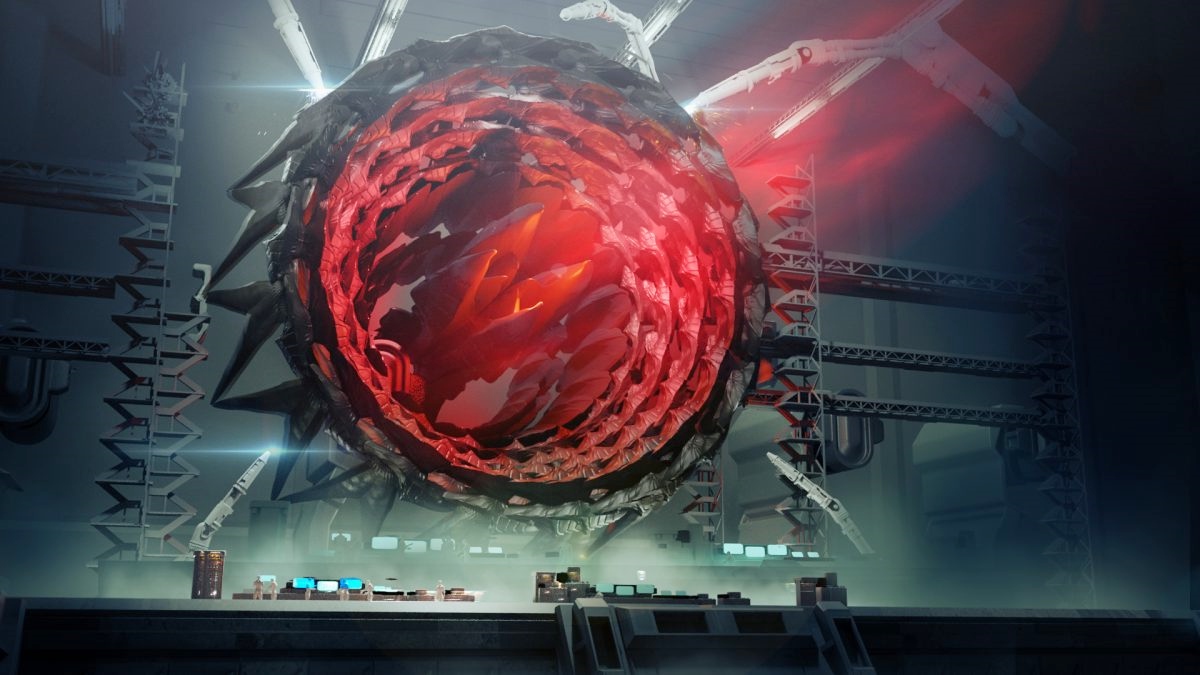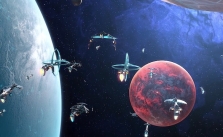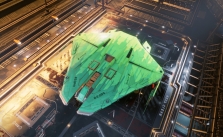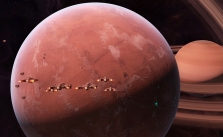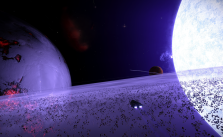Distant Worlds 2: Ultimate Guide to Space Combat & Ship Types
Wars and minor skirmishes are unavoidable when establishing a space empire. Although there are several peace options (treaties, alliances) available in-game, you will eventually have to use force against neighboring nations.
The following guide will cover space combat basics and prepare you for all future battles. If you want to learn more about the game’s mechanics, check out our other Distant Worlds 2 guides.
Distant Worlds 2 Consequences of War
- Learning space combat is an essential part of the game since it comes in handy when attacking new colonies and defending your settlements during enemy invasions.
- Your success/failure is determined by the War Score shown at the top of your screen.
- War Weariness is a negative penalty applied to your citizens, significantly lowering their happiness, leading to a poor economy. Higher levels of War Weariness can also cause rebellions.
- A higher War Weariness also correlates to more failures and prolonged wars.
- Attacking other colonies without reason (or provocation from their end) grants them a benefit to their War Weariness. Their initial War Weariness penalties won’t be as harsh as yours, allowing them to endure the war for an extended period.
- You also get War Weariness benefits if your enemies unreasonably attack you.
- War Weariness and War Score both determine an enemy Empire’s desire to end the war once it has begun.
- If you want to reclaim colonies or entire systems, do so before the war ends to prevent your colonists’ happiness from dropping too far.
- Secure peace treaties to end wars prematurely. Research, credits, captured characters, or even contested space stations are some of the most sought-after deals in such treaties.
Understanding Space Combat in Distant Worlds 2
- Strategically place your troops throughout the system to increase your chances of winning an enemy confrontation.
- Build a surplus of powerful ships just before an invasion; otherwise, you risk crippling your economy due to the upkeep costs. Learn more about managing your credits in our Distant Worlds 2 Economy guide.
- Automated fleets with proximity sensors are pretty effective at deterring aggression.
- Some players prefer large fleets, while others have several smaller fleets for greater flexibility and mobility. You can even automate certain tasks/conditions to avoid micromanaging everything and focus your attention on other aspects of your empire.
- Several factors affect space combat, but a few major ones are: Sensors, Defense Fleets, Stealth, Attack Fleets, Invasion Fleets, Raiding Fleets, Tactile Settings, Fleet Role and Template Management. Here is a brief overview of all of them.
Factors affecting Space Combat in Distant Worlds 2
- Sensors – Long-range sensors are essential during wars because they aid in spotting the enemy fleet. Prioritize the construction of Spaceports with long-range sensors to locate enemies as soon as possible.
Monitoring Stations also help detect the enemy presence and are built near borders and in between systems to seek out early attackers even before they reach your colonies, giving you plenty of time to mobilize your troops.
Sensors detect a presence first, then the empire, and finally the type of ship invading your boundaries.
- Defense Fleets – Building defensive fleets is challenging because you must consider the enemy’s offensive capabilities. Building weak, ineffective ships is pointless because they will be gunned down almost instantly.
Before investing in a defensive fleet, it’s best to analyze the enemy empire’s offenses, so you know what weapons and armor to equip your ships with.
You should also upgrade your Hyperdrives before building a defensive fleet since it’s no good having a powerful army if they can’t reach your colonies in time.
Also, ensure your fleets have enough fuel and are positioned close to your settlements so that they can respond quickly to any incoming threat.
- Attack Fleets – Attack fleets serves two purposes:
Destroying key structures and wreaking havoc on the enemy empire in general.
Creates blockades in enemy territory, disrupting trade and derailing their economy.
Attack fleets contribute to the majority of your offensive capabilities and play a central role during invading other worlds. They usually target Monitoring Stations, Spaceports, and Defensive Bases. However, it’s best to scout ahead and strike the vulnerable regions (little to no defensive fleets) first.
- Invasion Fleets – The Attack and Invasion fleets work simultaneously to conquer enemy worlds, especially the highly-populated and well-defended ones with powerful planetary defenses. The Invasion Fleet moves in once the main Attack Fleet manages to reduce the enemy defenses.
- Raiding Fleets – Raiding fleets are the harbingers of war. They do not form the bulk of your attack power and usually consist of smaller fleets with the primary goal to thin out and weaken the enemy defenses rather than outright destroying them.
They target isolated structures such as mines, monitoring stations, and research facilities. The fleet causes the enemy’s defenses to scatter, allowing your main attack force to punch through easily.
When invading an advanced colony, you’ll need to properly coordinate the Attack, Invasion, and Raiding fleets.
- Tactile Settings – Tactile Settings act as automatic commands, instructing your ships on how to respond to threats and fight battles. There are two types of tactile settings available: one for Ships and another for Fleets.
| Settings | Name and Options |
| Ship Tactile Settings | Role Within Fleet – Attacks, Close Escort, Picket. |
| Engagement Range – Do not Engage, Engage when Attacked, Nearby, Same Location, Same System. | |
| Attack Stance (Weaker and Stronger Targets) – Evade, Cautious, Neutral, Aggressive. | |
| Retreat When – Enemy in the same System, Enemy at same Location, Enemy Nearby, When Attacked, Shields below 50% or Any Armor Damage, Shields below 20% or Armor below 50%, Any Non-Defense Component Damaged, 20% Non-Defense Component Damaged, 50% Non-Defense Component Damaged, Never. | |
| Invade Colonies – Immediately, When Clear, Never. | |
| Fleet Tactile Settings | Engagement Range – Do not Engage, Engage when Attacked, Nearby, Same Location, Same System, Sector Range, 33% of Fuel Range, 50% of Fuel Range. |
| Formation – Very Tight, Tight, Normal, Loose, Very Loose. | |
| Allow Ship Role Reassignment – Ships reassign roles within the fleet as needed, Ships retain their current roles within the fleet. | |
| Retreat When – Enemy Strength 50% greater, Enemy Strength 100% greater, Enemy Strength 200% greater, Never, Enemy Strength Greater. |
- Fleet Roles and Templates – The role of the fleet determines whether it is a Defensive, Attack, Invasion, or Raid fleet. Templates determine the ships that go into each fleet. To master Space Combat in Distant Worlds 2, you’ll need to learn the best ship-template combination.
Distant Worlds 2 Ship Types
- There are several types of ships available in the game. If it’s unavailable, you probably did not research the requirements needed to build that specific ship. Here is a list of all the ships followed by a short description.
| Ship Name | Ship Size | Description |
| Battleships and Carriers | 1200-1800 | – The largest military ship in the game with unmatched offense and defense.
– Carries can carry the most starfighters.
– Both are capable of being effective fleet command ships.
– Bonus Weapon Range and Shield Recharge Rate.
– Penalty to Countermeasures. |
| Cruisers | 750-900 | – Multipurpose ships with balanced offense, defense, and speed, but no significant bonuses.
– Plays a crucial role in attacking fleets and is great for offense.
– Sufficient component bays. |
| Destroyers | 600-675 | – Smallest military ships in the game perfect for offensive operations.
– Best for the early game since it’s the largest ship available in the beginning.
– Better alternatives (capital ships or cruisers) in the middle to late game.
– Bonus Targeting, Speed, or Countermeasures. |
| Frigates | 450-490 | – Agile military ships.
– First line of defense during enemy raids.
– Bonus Speed, Countermeasures, and Maneuvering. |
| Escorts | 375-415 | – Lightly armed military ships.
– Smallest but the fastest of military ships.
– Mainly used for patrolling stations and colonies.
– Also, escorts important ships (construction or colony ships) during missions.
– Bonus Maneuvering, Speed, and Countermeasures. |
| Troop Transports | 450-1500 | – Specialized ships that transport troops in between colonies during mass migrations and enemy invasions.
– Heavily shielded and armored but does not have many powerful weapons onboard.
– Carries ships that attack defensive installations in other colonies during invasions.
– Bonus Boarding Defenses. |
To learn more about attacking and defending options during invasions, check out our Distant Worlds 2 Troops guide.
Parting thoughts
Space Combat is difficult to master, especially in a game like Distant Worlds 2 with a high skill cap. Experiment with various fleet combinations to determine which ones work best. This guide lays a solid foundation for the fundamentals, but you’ll need to keep practicing if you want to improve your game.

